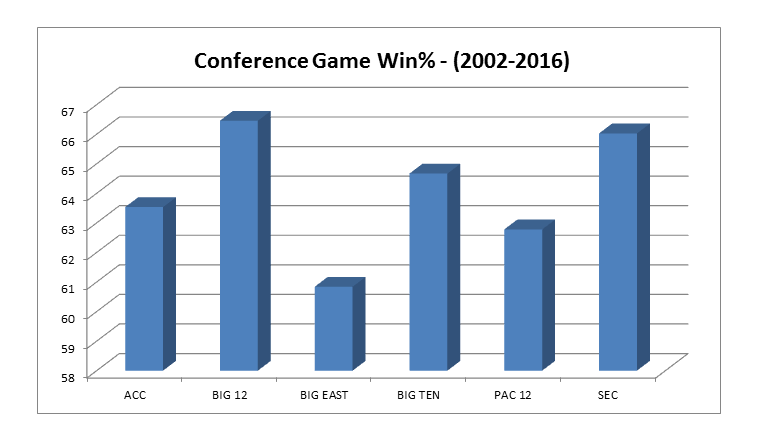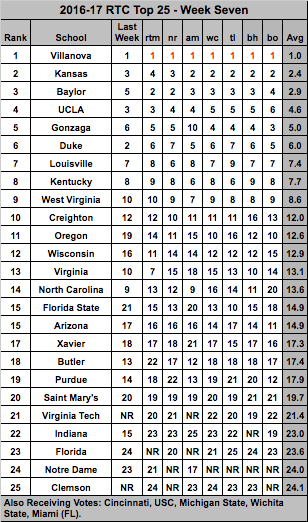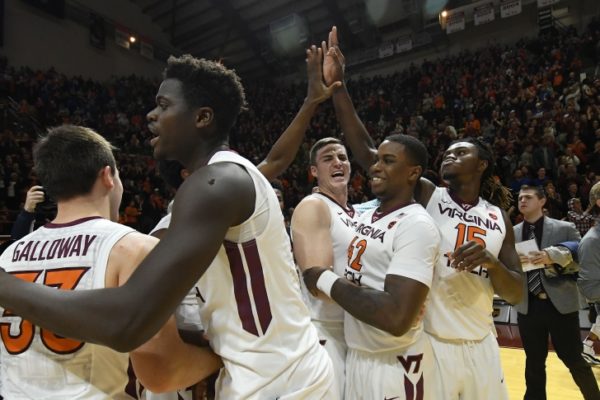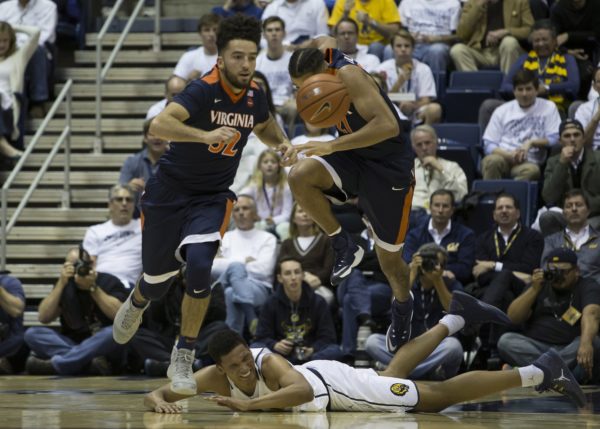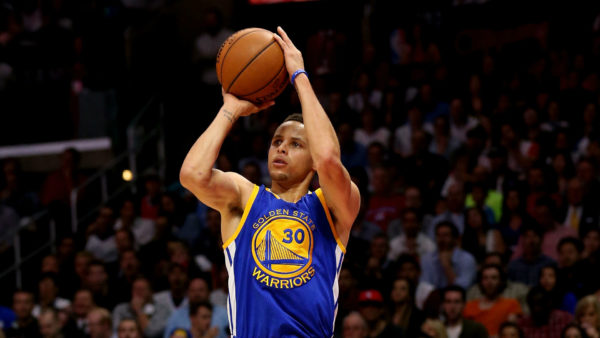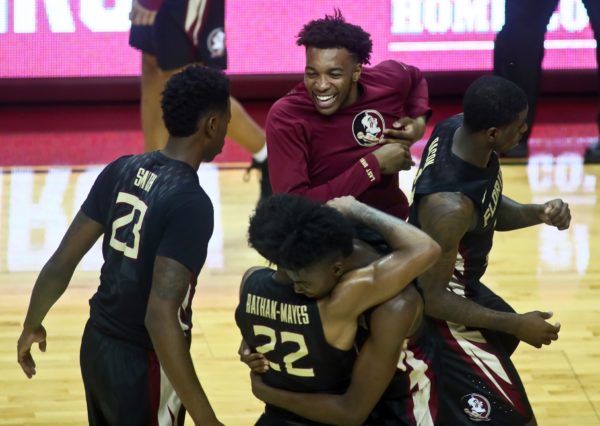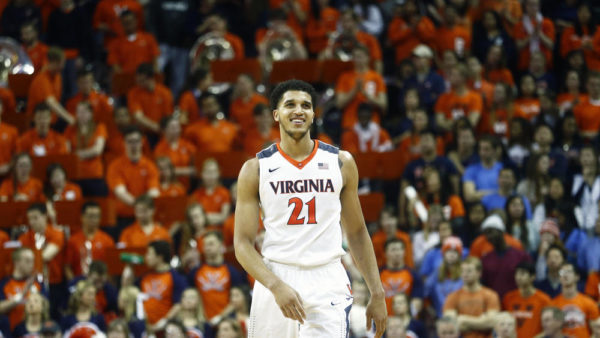ACC Weekend Review: 01.16.17 Edition
Posted by Brad Jenkins (@bradjenk) on January 16th, 2017There were several marquee match-ups in the ACC this weekend, including two monster games on Saturday afternoon as North Carolina overcame some adversity to hand Florida State its first league loss and Louisville ensured that Duke continued its struggles on the road. Later that day, Notre Dame held off Virginia Tech to remain unbeaten in league play, while three schools that entered January with NCAA Tournament aspirations — Clemson, Pittsburgh and North Carolina State — all suffered devastating home defeats to drop to a last place tie in the standings. Here are the highlights from the weekend around the ACC.
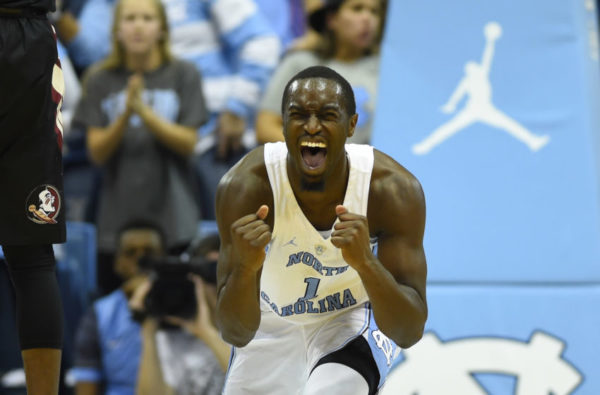
Theo Pinson celebrates North Carolina’s big win over Florida State. (USA TODAY Sports)
- Best Win: In a league as strong as the ACC this season, sometimes a team must show some collective toughness to pull out a win. That’s exactly what North Carolina did on Saturday afternoon in its impressive 96-83 home victory over a red-hot Florida State squad. Faced with the daunting task of playing the nation’s second tallest team without freshman center Tony Bradley (out with a concussion), the Tar Heels were already short-handed in the paint. With Kennedy Meeks and Isaiah Hicks battling foul trouble, Roy Williams was forced to play almost half the game with no true post player. North Carolina not only hung in with the bigger, deeper Seminoles, but the Tar Heels managed to dominate the glass in a surprisingly effective rebounding effort (+22). Three Tar Heels — Hicks, Joel Berry and Justin Jackson — finished with over 20 points and Theo Pinson turned in a solid overall effort with 12 points, 10 rebounds and three assists.





























